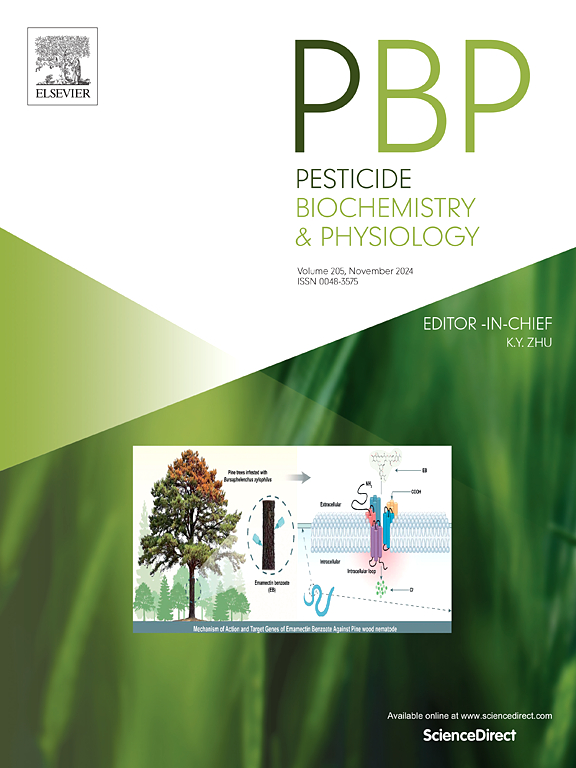Histocytological analysis reveals the biocontrol activity of a rhizospheric bacterium Pseudomonas rhizophila Z98 against kiwifruit bacterial canker
IF 4.2
1区 农林科学
Q2 BIOCHEMISTRY & MOLECULAR BIOLOGY
引用次数: 0
Abstract
Kiwifruit bacterial canker (KBC), caused by Pseudomonas syringae pv. actinidiae (Psa), poses a significant threat to the global kiwifruit industry. Currently, there is a scarcity of highly efficient biocontrol agents for the prevention and control of KBC, which limits the comprehensive management of the disease. This study investigates the biocontrol potential of P. rhizophila Z98, isolated from kiwifruit rhizosphere, which exhibits significant inhibitory effects on Psa. The in vitro leaf disc and vein assays demonstrated Z98's potent preventive effect, achieving a 98.89 % reduction in KBC and its ability to limit Psa's vascular spread. Microscopic analysis showed that Psa cells exposed to Z98 underwent significant morphological changes, including cell wall depressions, wrinkling, tumorous protrusions, and intracellular disruptions like cytoplasmic disintegration and vacuolization, culminating in cell death. These effects were were mirrored with Z98's fermentation broth crude extract, suggesting that Z98 combats Psa through the secretion of bioactive substances. Additionally, Z98 successfully colonizes kiwifruit tissues, achieving a biomass of 3.78 × 105 CFU·g−1 without compromising tissue integrity. Moreover, Z98 induces the upregulation of defense-related genes and callose deposition in kiwifruit, thereby activating plant immune responses. These findings elucidate the cellular mechanisms underlying the biocontrol effects of rhizosphere bacteria and offer a novel biological resource for managing bacterial canker in woody plants.

求助全文
约1分钟内获得全文
求助全文
来源期刊
CiteScore
7.00
自引率
8.50%
发文量
238
审稿时长
4.2 months
期刊介绍:
Pesticide Biochemistry and Physiology publishes original scientific articles pertaining to the mode of action of plant protection agents such as insecticides, fungicides, herbicides, and similar compounds, including nonlethal pest control agents, biosynthesis of pheromones, hormones, and plant resistance agents. Manuscripts may include a biochemical, physiological, or molecular study for an understanding of comparative toxicology or selective toxicity of both target and nontarget organisms. Particular interest will be given to studies on the molecular biology of pest control, toxicology, and pesticide resistance.
Research Areas Emphasized Include the Biochemistry and Physiology of:
• Comparative toxicity
• Mode of action
• Pathophysiology
• Plant growth regulators
• Resistance
• Other effects of pesticides on both parasites and hosts.

 求助内容:
求助内容: 应助结果提醒方式:
应助结果提醒方式:


